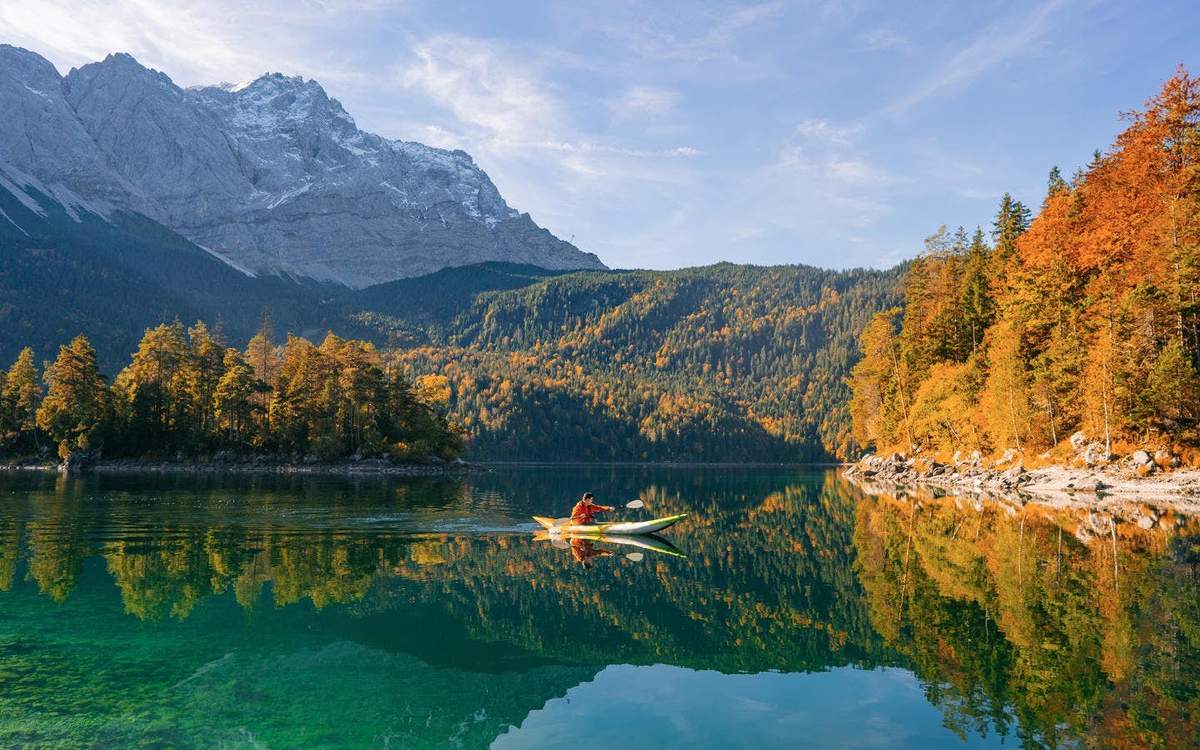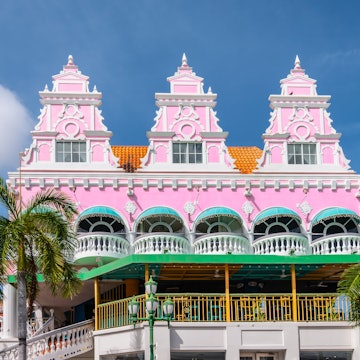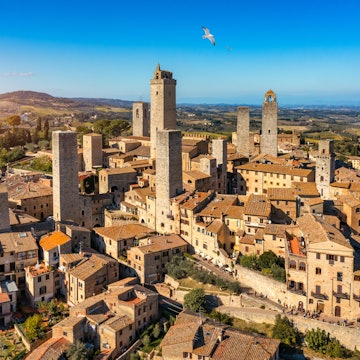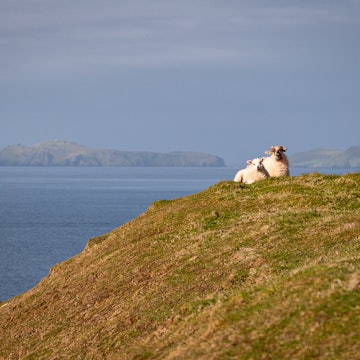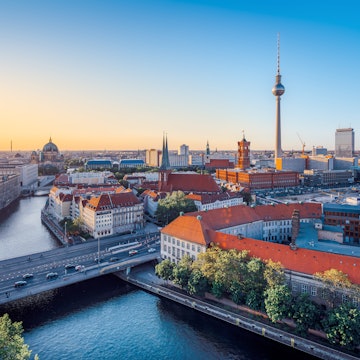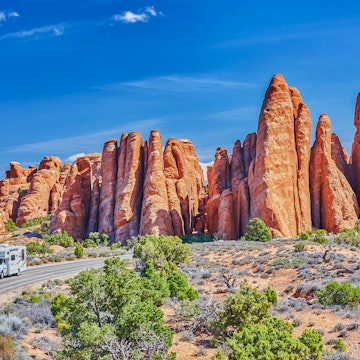
What I have learned from travelling the world with a wheelchair
Jul 27, 2019 • 6 min read

Road trippin' across the USA © Violet Ogden
Living with a disability all my life, as a crutches user initially and now a wheelchair user, I’ve come to grips with that universal vagueness around accessibility. I know that no matter how much I spend on accommodation or how much research I do before boarding a plane, I will face obstacles along the way. This isn’t necessarily pessimism but more a healthy dose of realism that wards off total devastation when things go wrong.
In recent years, I’ve made travelling my priority. I’ve gone on road trips across the USA, weekend breaks in Berlin and Lisbon, a friend’s wedding in Lake Como, winter excursions to Iceland and life changing visits to Japan; even though I had incredible times in each of these places, none of them were without challenges.

Learn to manage the challenges
There is no such thing as a perfectly accessible city. While some cities can boast about fully accessible transport systems or a higher rate of accessible tourist destinations, there’s a collective vagueness that comes with the word accessible and it changes depending on where you are travelling and who you are speaking to.
Lift off
When you’re booking your flights, you will need to clarify how much assistance you want. You can have assistance immediately from check in — which will help you cut the waiting time in security — or you can meet someone at the gate if you prefer to browse the duty free without shame. On top of ticking these options when booking your flight, you must contact the airline directly to ensure you're assigned a suitable seat. People with physical disabilities cannot sit in the emergency exit rows and they are usually seated beside the window to avoid other passengers climbing over them during the flight.
For long-haul flights, there is an onboard wheelchair available if you need to use the toilet. It’s not the most sophisticated of chairs, so you will require assistance getting from the chair into the cubicle and there may be a delay while the cabin crew get the chair and clear the aisle. So to be on the safe side, always preempt a pee. Don’t wait until you’re bursting. Unfortunately, short flights do not have this option and I often find myself limiting my liquid intake in the hours before take off.

Travel insurance
Most disabilities fall under the category of a pre-existing condition with travel insurance and if you are a wheelchair user, your insurance quote won’t have any additional charges. However, if you are currently receiving medical treatment, travelling against the advice of your medical team or are waiting for surgery, you may not be eligible for cover. Some insurance companies specialise in plans for disabled people, which will specifically cover the costs of damage to or loss of mobility aids, and cover for carers if they become ill. To make sure that you have a policy that covers your needs best, contact insurance companies directly.
Making compromises
Whether I’m staying in five star accommodation or budget hostels, a big city or a remote village, I have to do triple the amount of pre-holiday research my non-disabled friends undertake for the same trip and I also have to make compromises to have the same experiences.
These compromises come in the shape of booking wheelchair friendly accommodation that has three steps at the front door and means I cannot come and go without assistance. Having to climb into the bathroom because my wheelchair doesn’t fit through the door or eating a delicious dinner in a restaurant but not being able to use the bathroom because it’s upstairs. It means staying in a luxurious hotel that only has access facilities in the bedroom, leaving my friends to carry me down to the swimming pool or having no option but to take the long way around the city on a bus or paying extra for a taxi, because the most efficient form of transport doesn’t have a working elevator in every station.

Triple check that accommodation is suitable
When it says that a hotel, restaurant or venue is accessible online, you need to follow up with a phone call or an email to find out what that version of accessible means. Ask for door measurements, ask for step counts and ask about the size of the bathroom and the elevator. I was once caught out in Barcelona when I arrived at my hostel after a late flight to discover that while the hostel itself was listed as wheelchair accessible, it was on the fourth floor and my chair did not fit in the elevator. After a few frantic phone calls by the hostel staff, we somehow found a vacant apartment and though it still had one step at the front door, the elevator was bigger. If I had phoned ahead of my arrival to ask for measurements, I wouldn’t have had that awful midnight scramble.
Added costs
If you’re spending a lot of money or travelling far away, you want to know exactly what you’re paying for, which is a particular pain considering that accessible bedrooms can sometimes be the most expensive rooms on offer. If you’re booking through third-party websites, it’s essential that you contact the hotel directly to confirm that your room is suitable and, pointing out the price hike for accessible rooms, ask if they can offer a discounted rate. Through experience, it’s better to be overly cautious when booking instead of showing up somewhere hoping that they will deliver what they’ve promised online.
Similarly, some guided tours may charge extra for access facilities. In Iceland, there was a fully accessible Golden Circle tour available that included an adapted bus and a pick-up and drop-off from my accommodation. As handy as that would have been, the cost was roughly €400 ($445) per person whereas the non-accessible tour was €80 ($89) per person. Going for the affordable option meant I had to get out of my wheelchair and hoist myself onto the coach and into my chair. Keeping the situation light, all I could do was laugh. It wasn’t glamorous — these things rarely are — but my bank account was certainly happier.

Having a Plan B
You’ll have to make considerations in order to experience authentic living experiences within traditional cultures. If you want to stay in a thatched cottage in Ireland, a hut by a tropical beach in Indonesia or a ryokan guesthouse in Japan, unfortunately access facilities won’t be top notch. Knowing this in advance means you and your travel buddies can come up with lifting systems, knowing that sometimes it’s worth coming up with a Plan B to avoid missing out completely. Having a Plan B is also essential with transport. Study the transport system before you arrive, learning which buses, trains and trams provide assistance or have access facilities. In big train stations, the easiest way to plan a route is to place your destination on Google Maps and to show it to a staff member at the information desk. They will then be able to tell you the most convenient way to get there.
Always do your research
A recent survey by Compare the Market listed Luxembourg, Berlin, Stockholm, Oslo, and Bern as Europe’s top five most accessible cities to visit, which makes sense given their progressive and liberal status. All benefit from mostly flat terrains and contemporary architecture, but their high rating doesn’t mean you can cut back on your research before visiting. Load up on as much information as you can before you travel, check the best spots to visit, and as you become more comfortable with the transport system and the lay of the land, you will be better equipped to overcome any difficulties that arise.
Download Lonely Planet's Accessible Travel Online Resources (2019 edition) for free.





